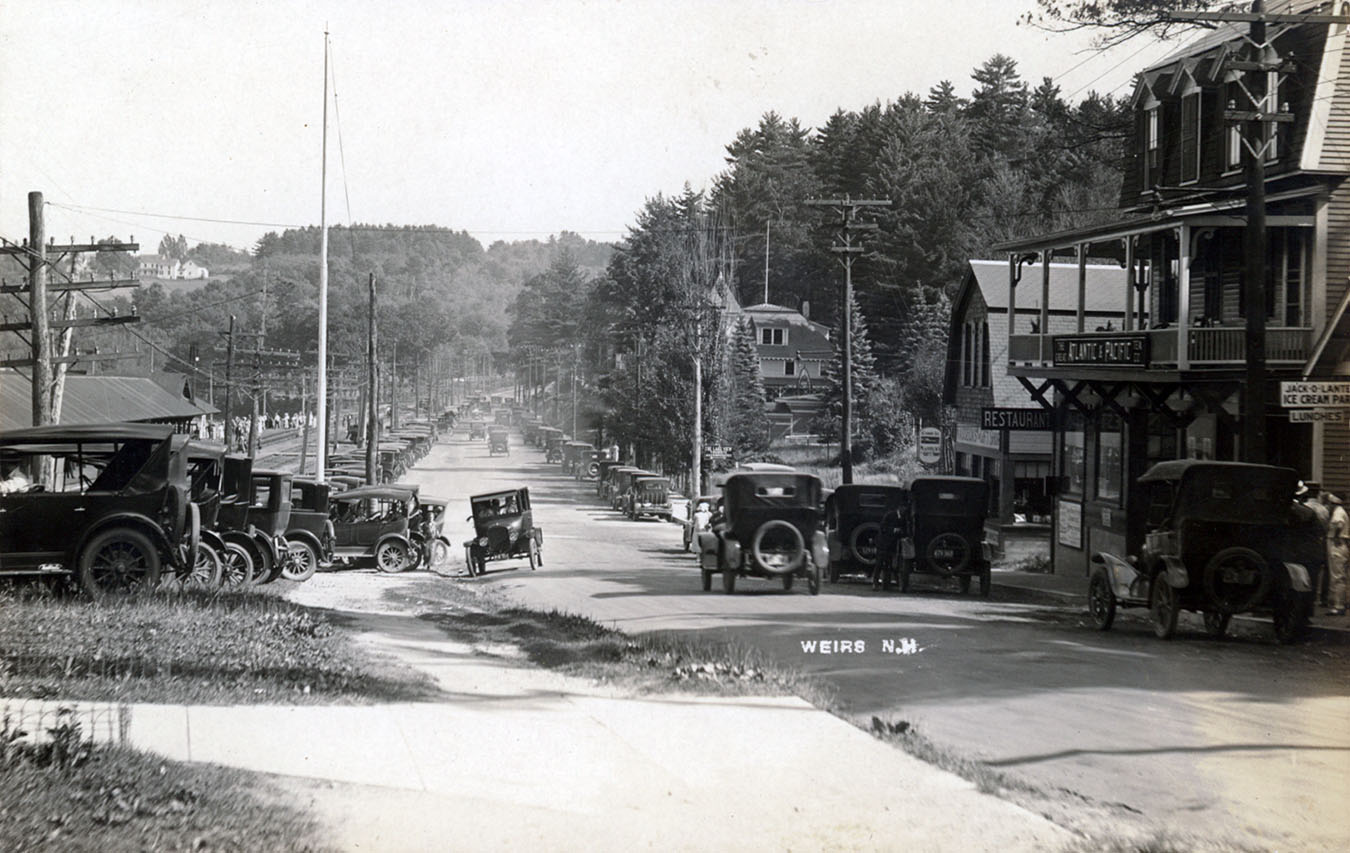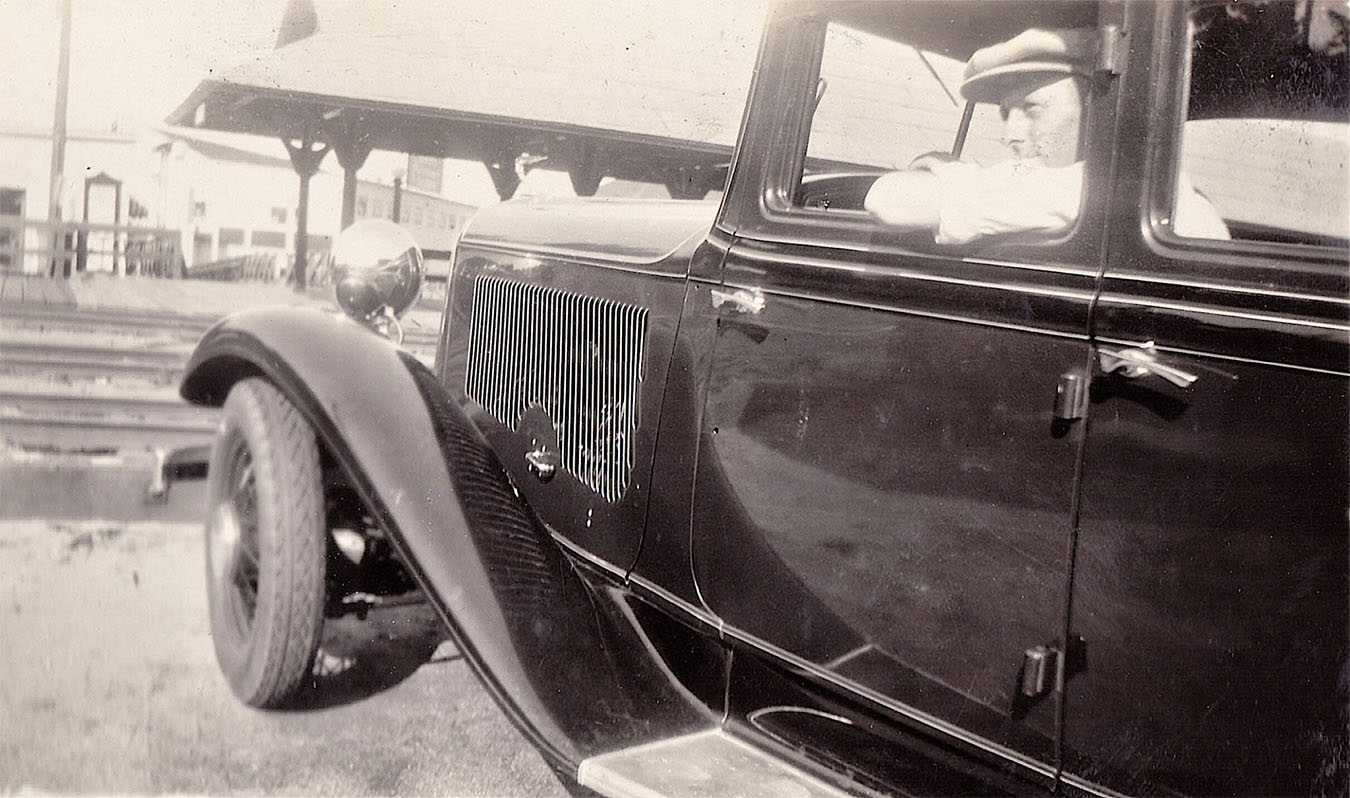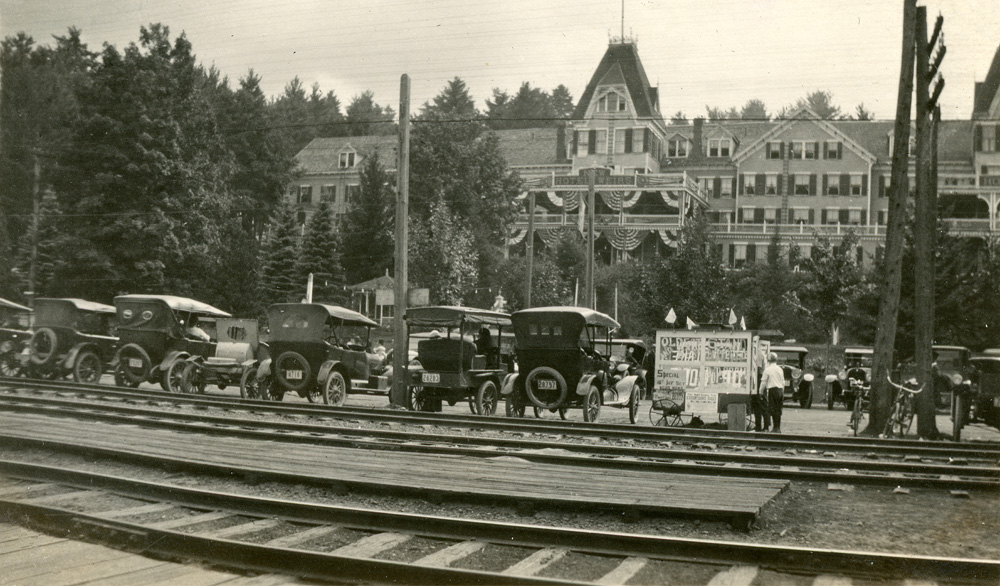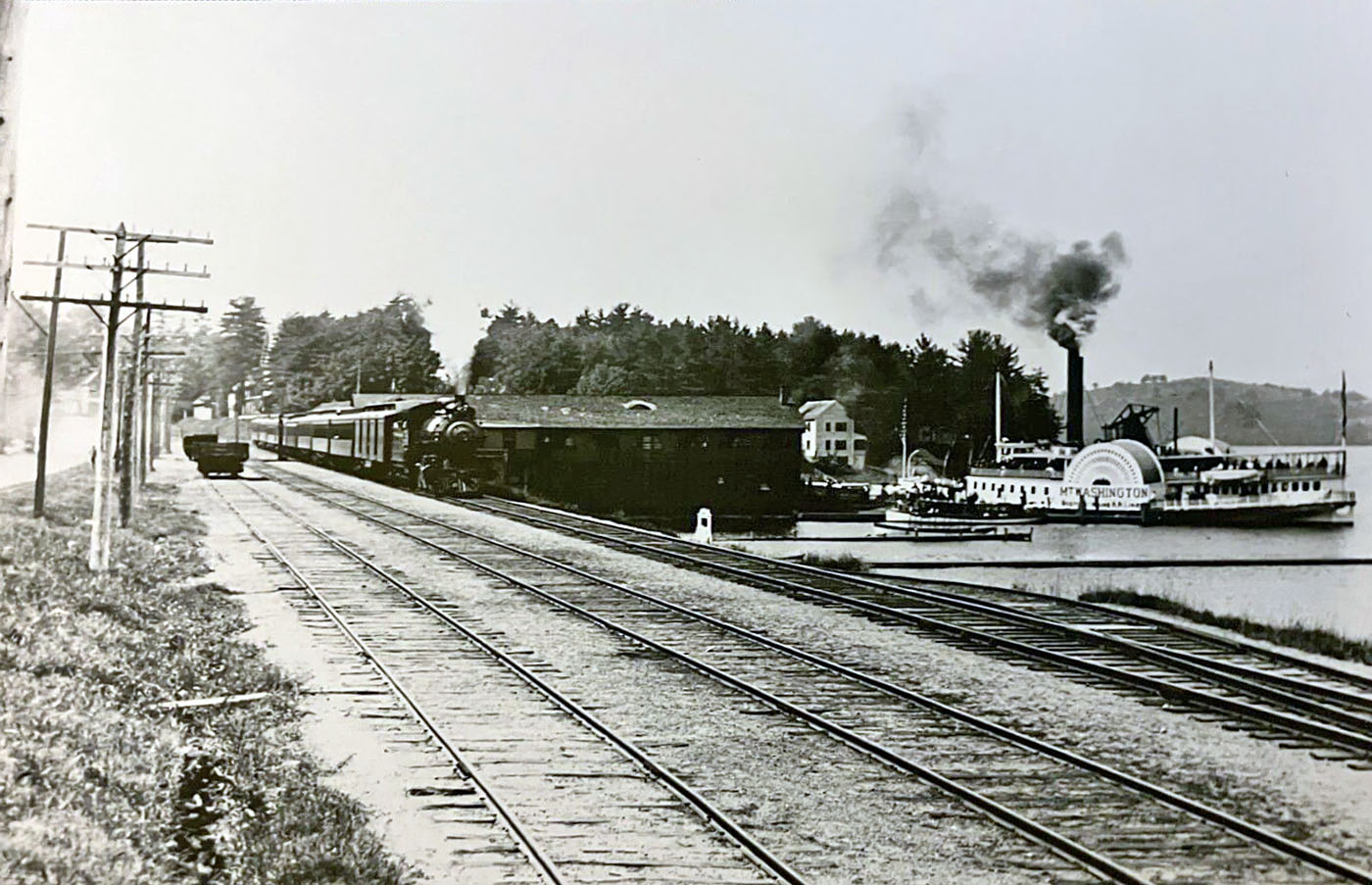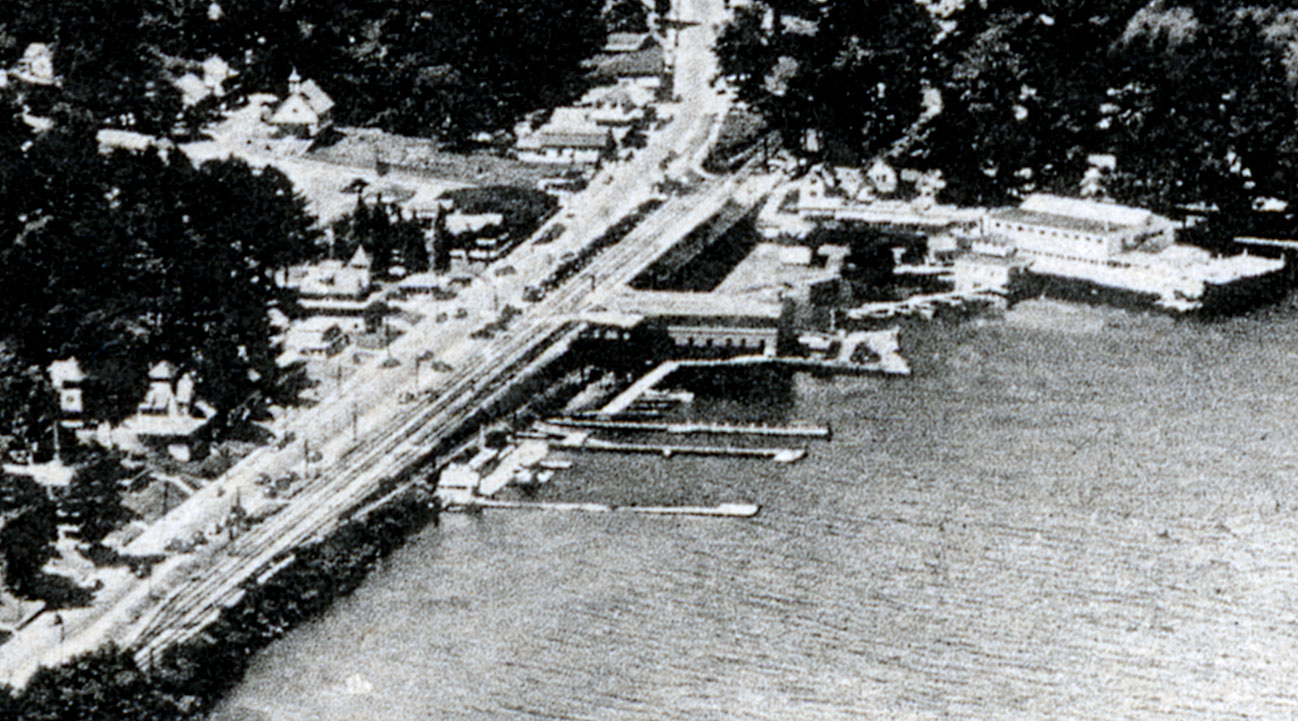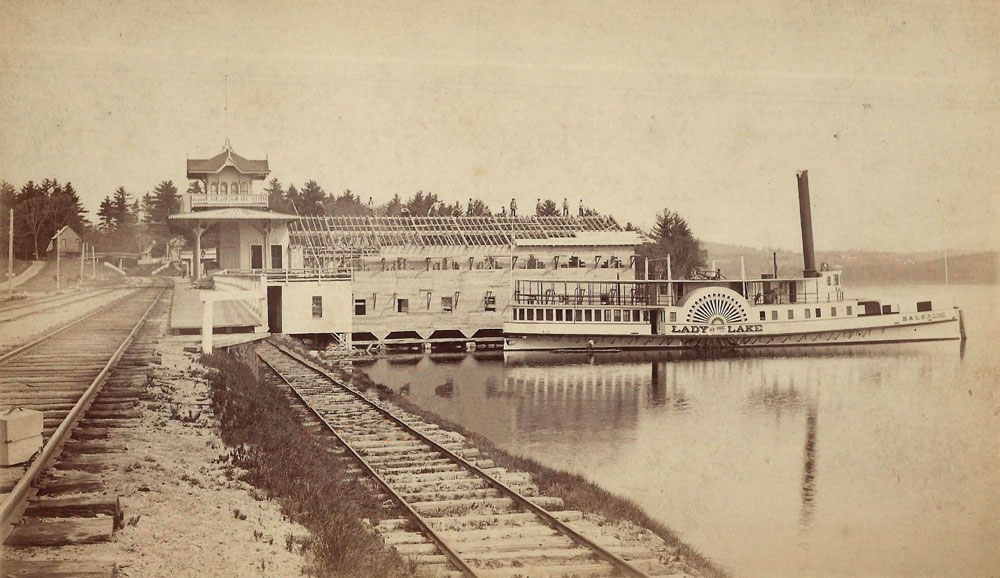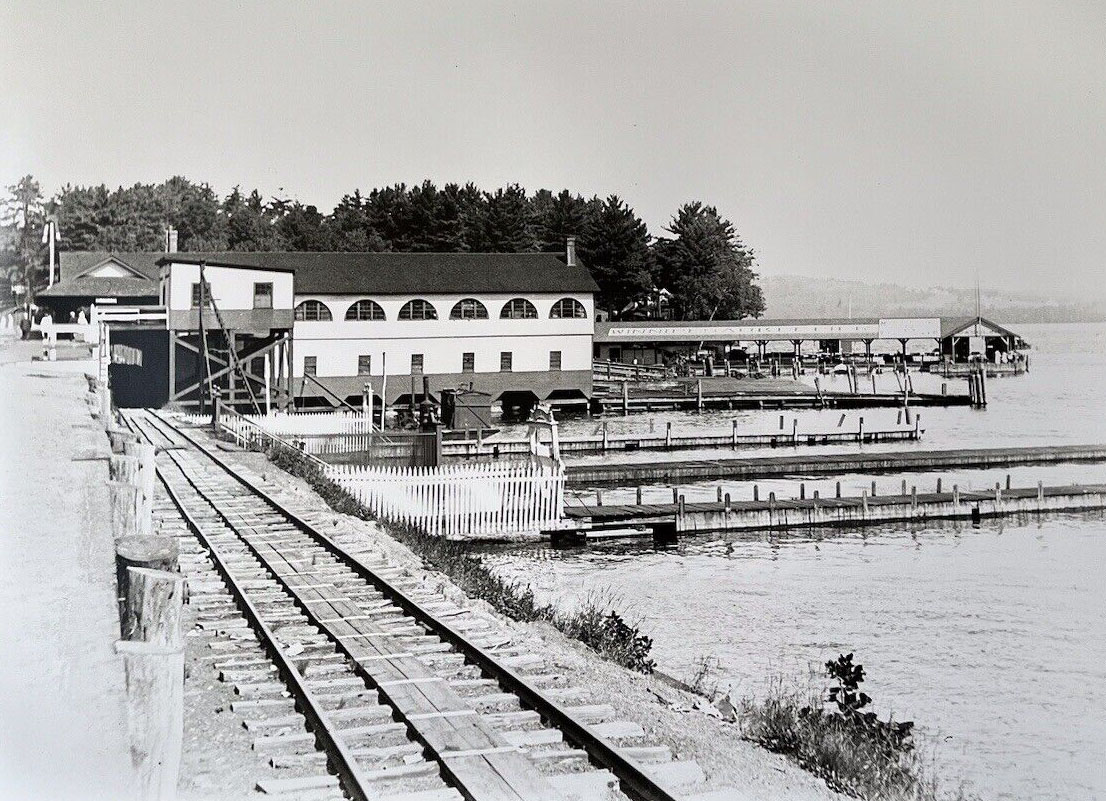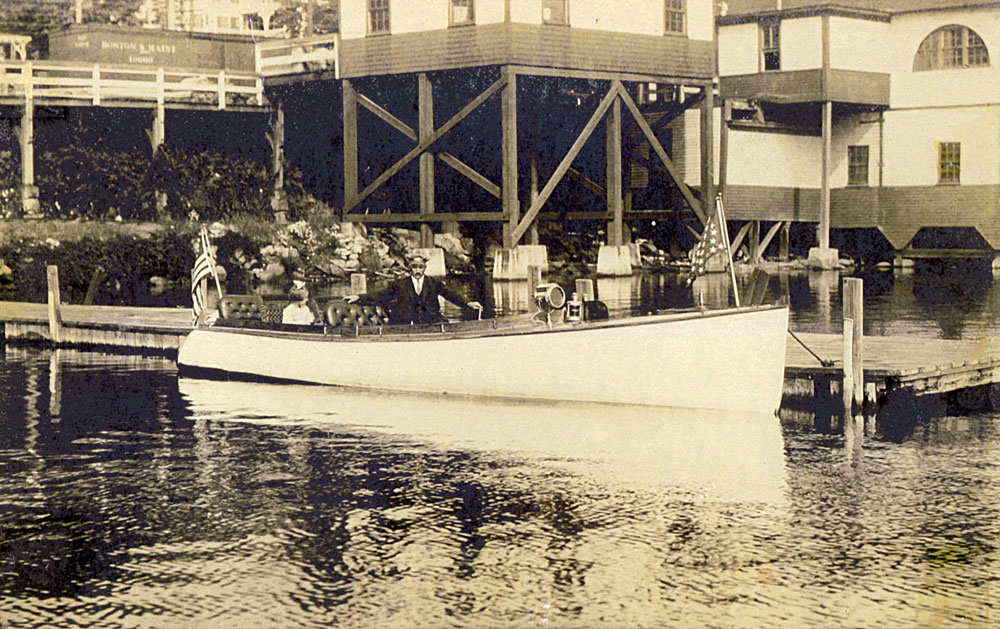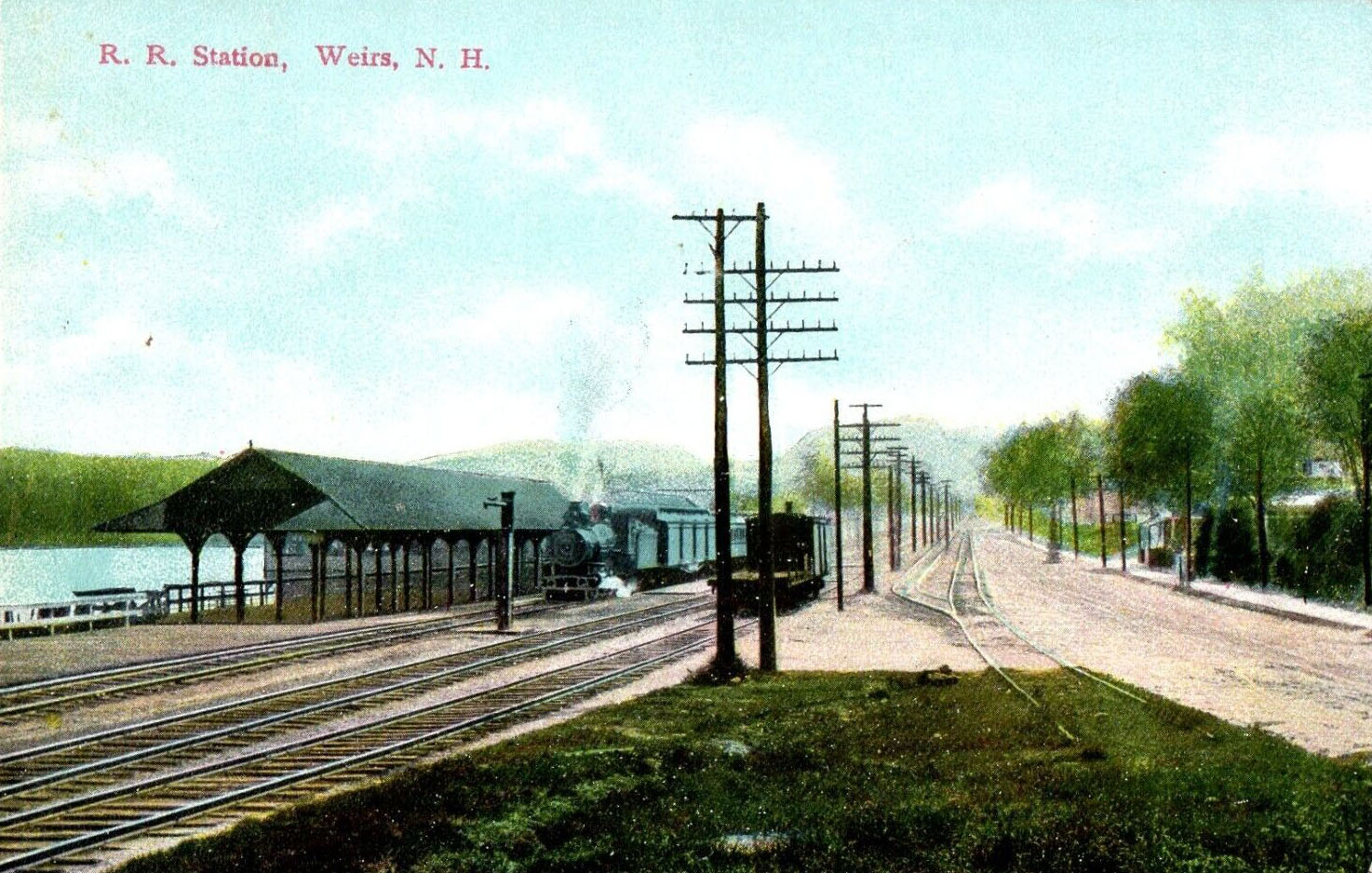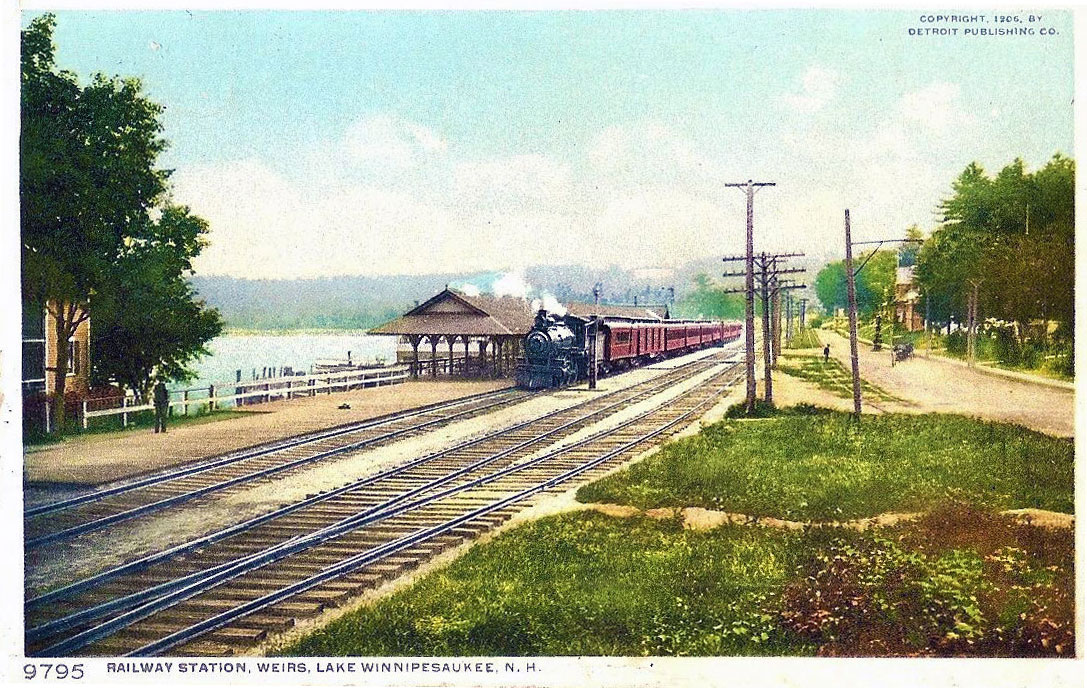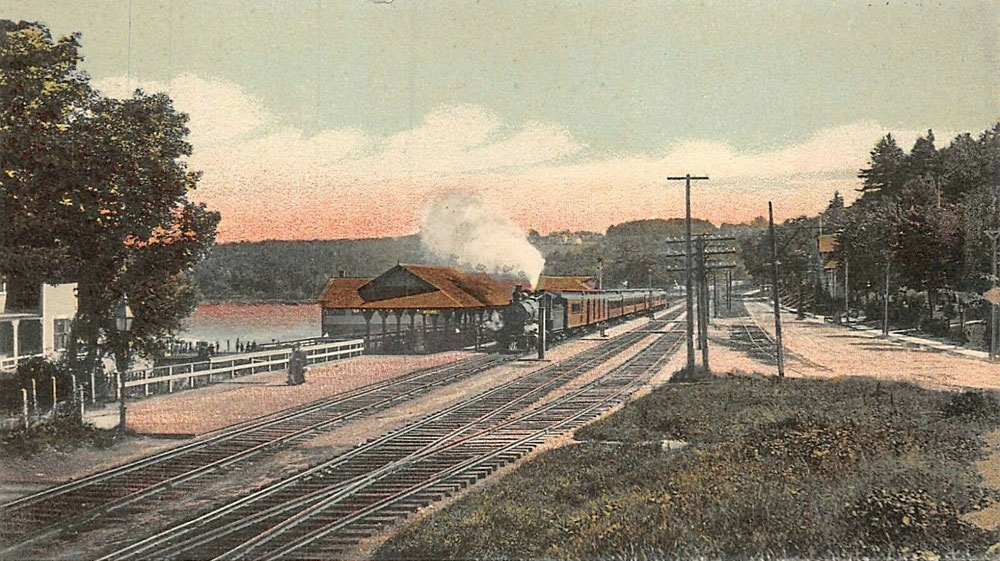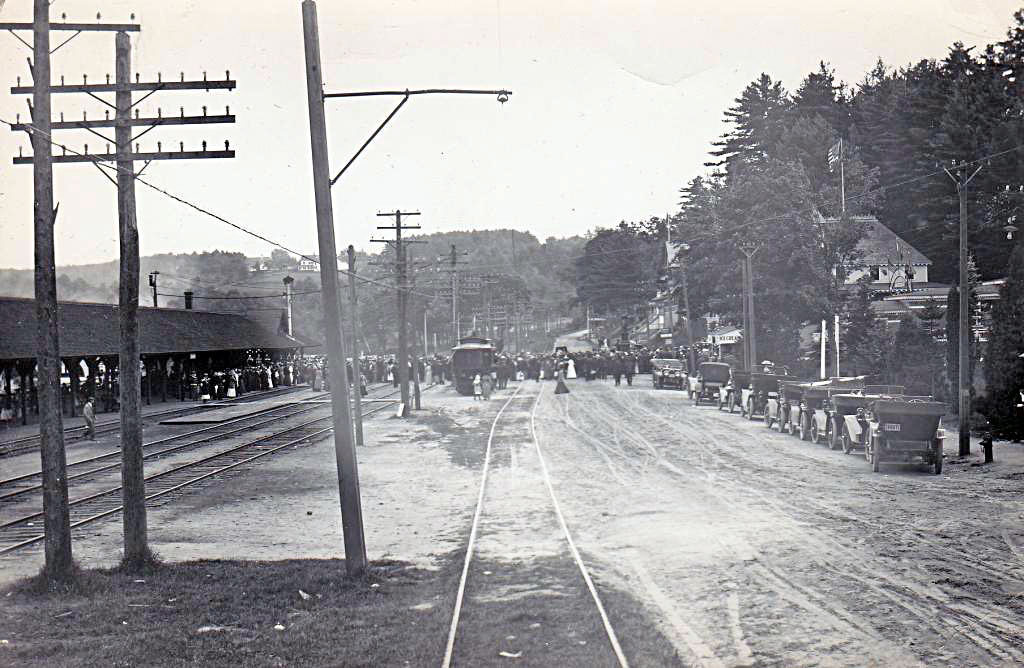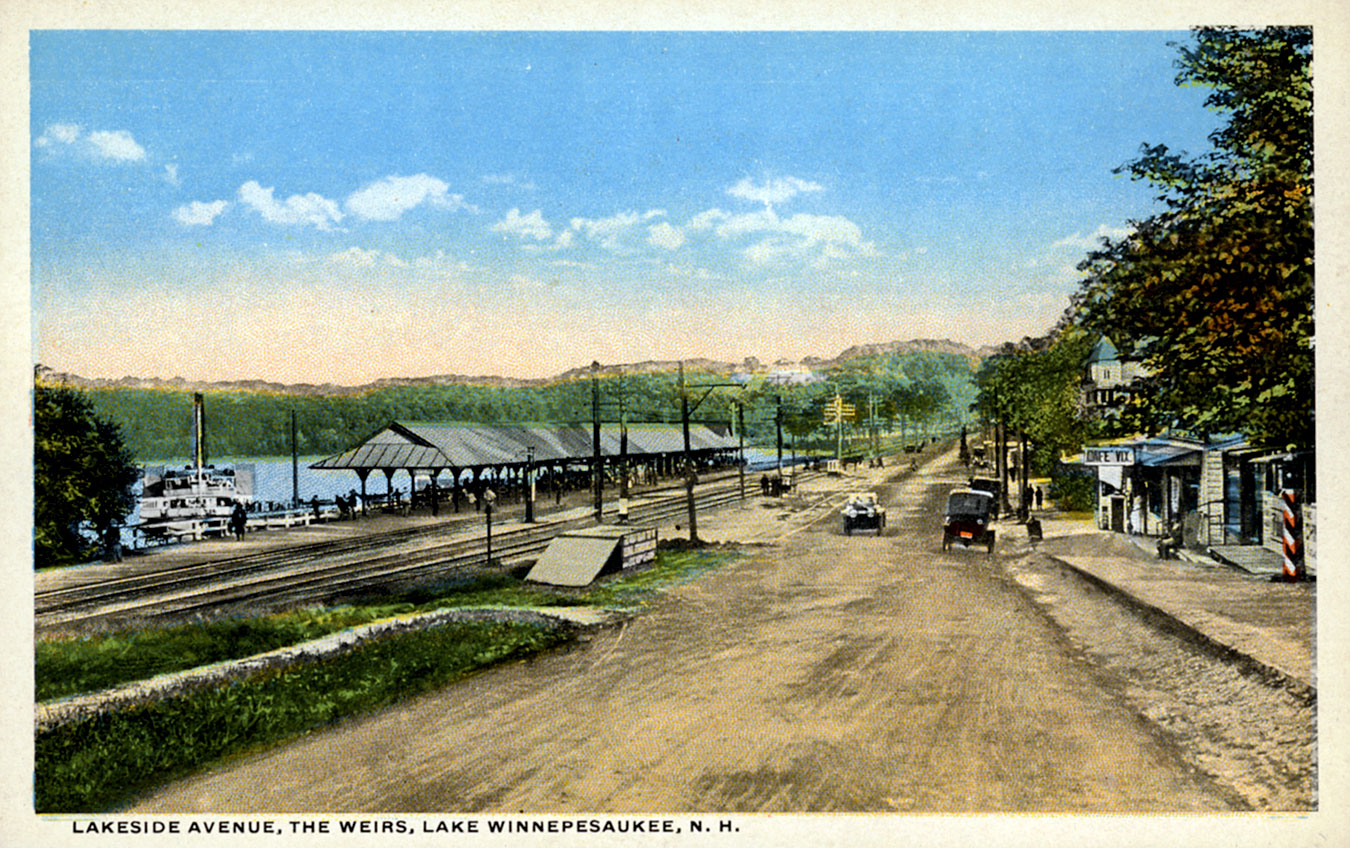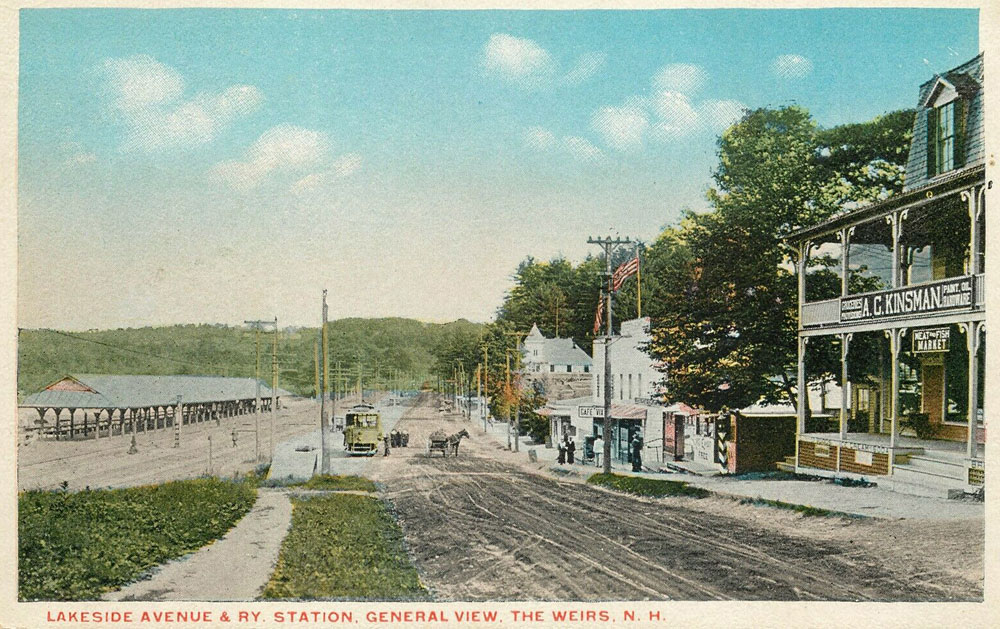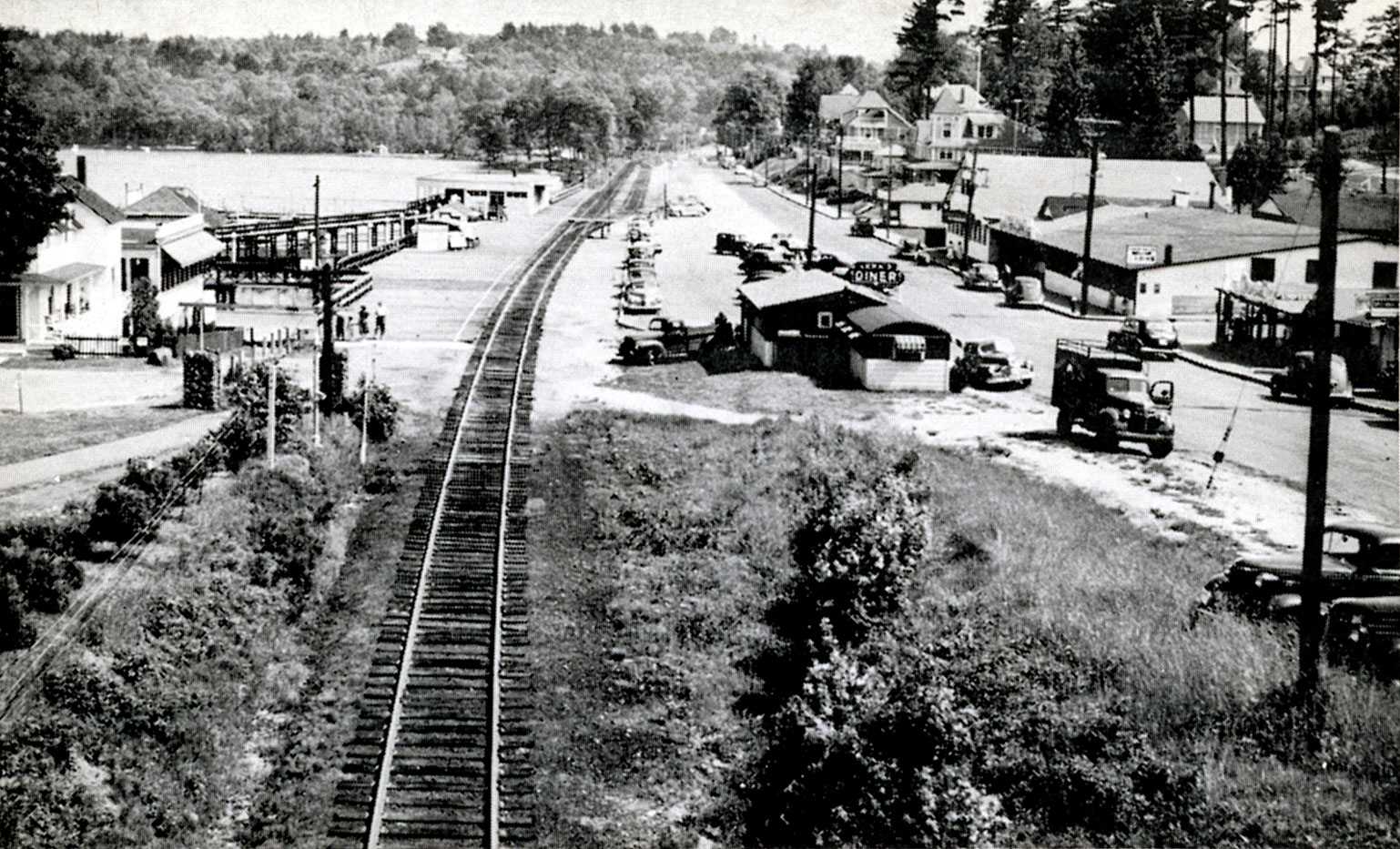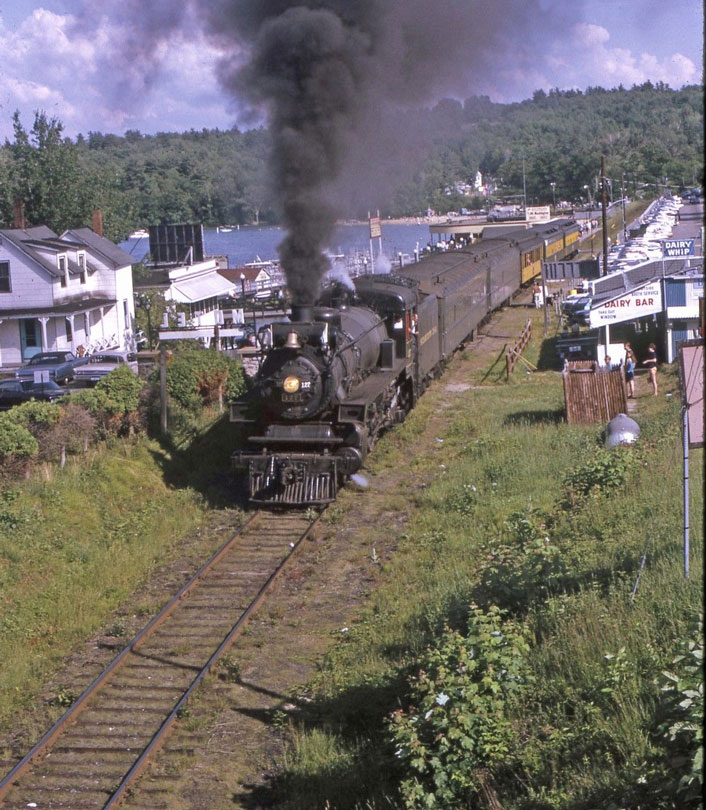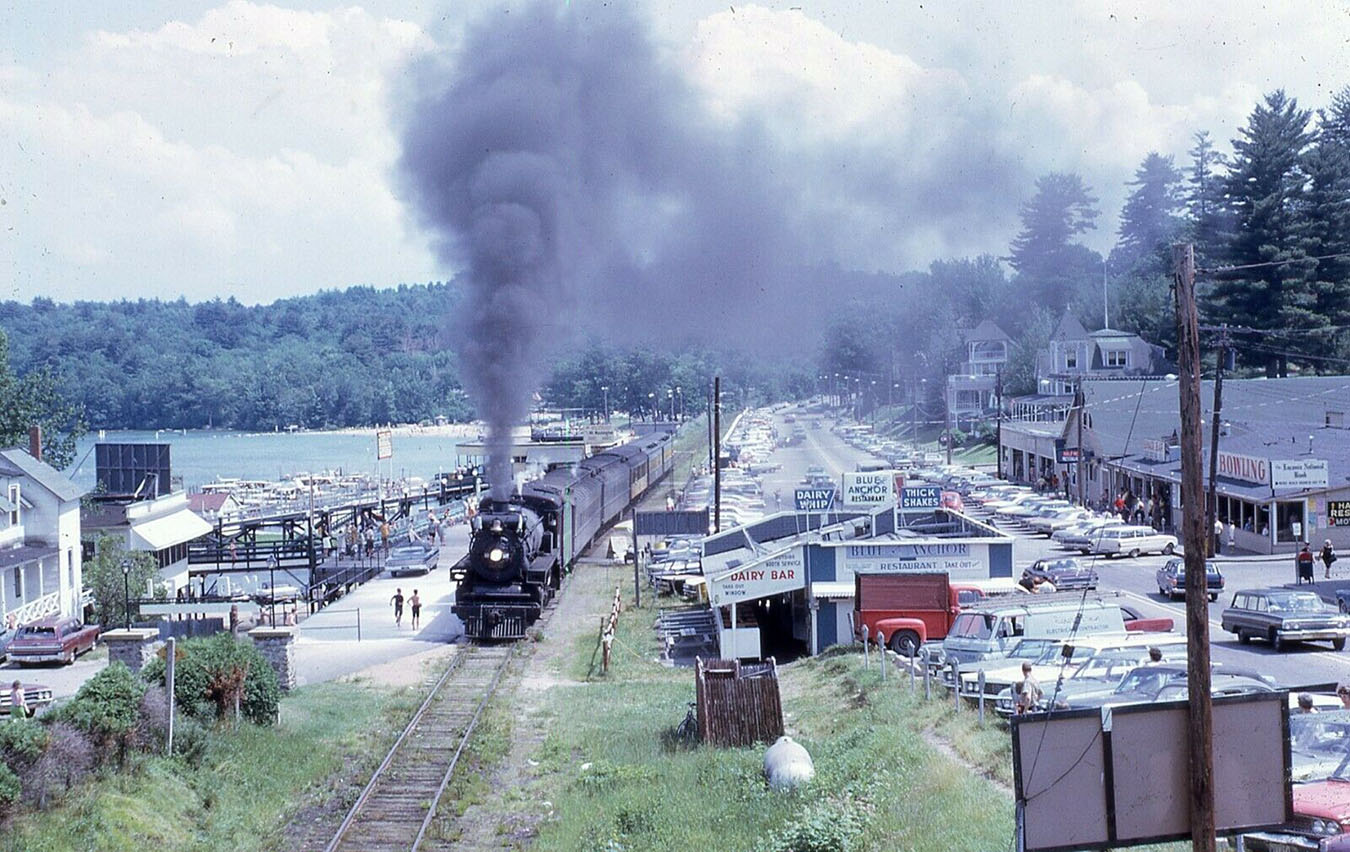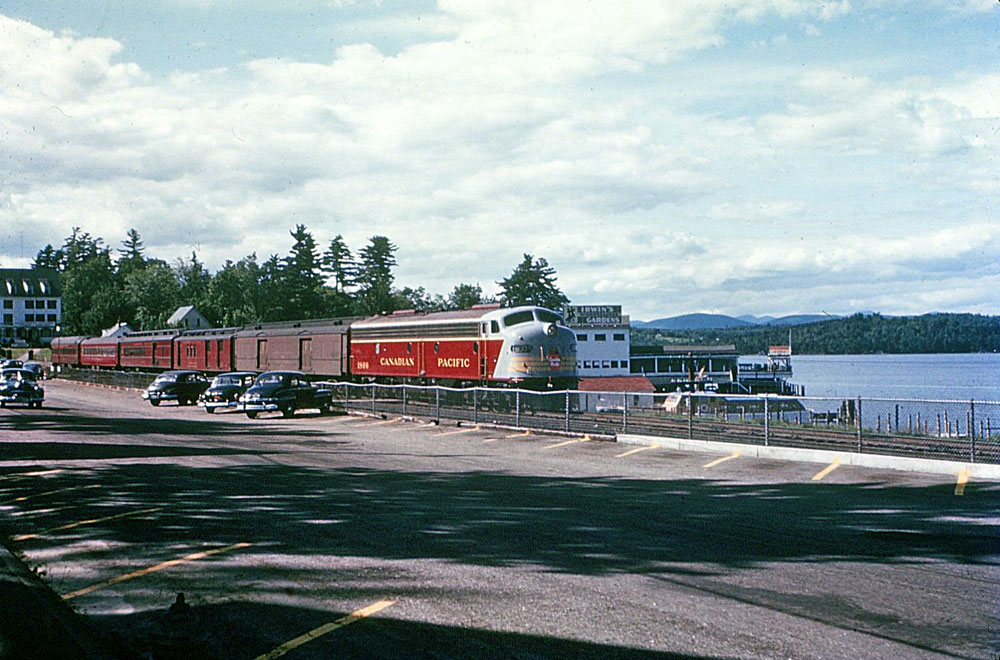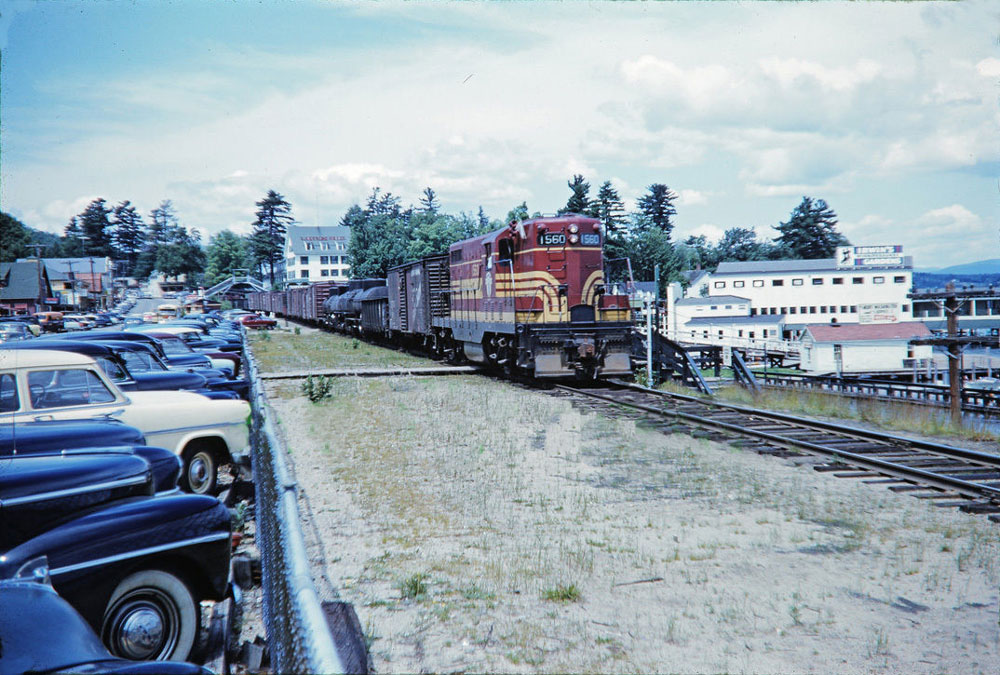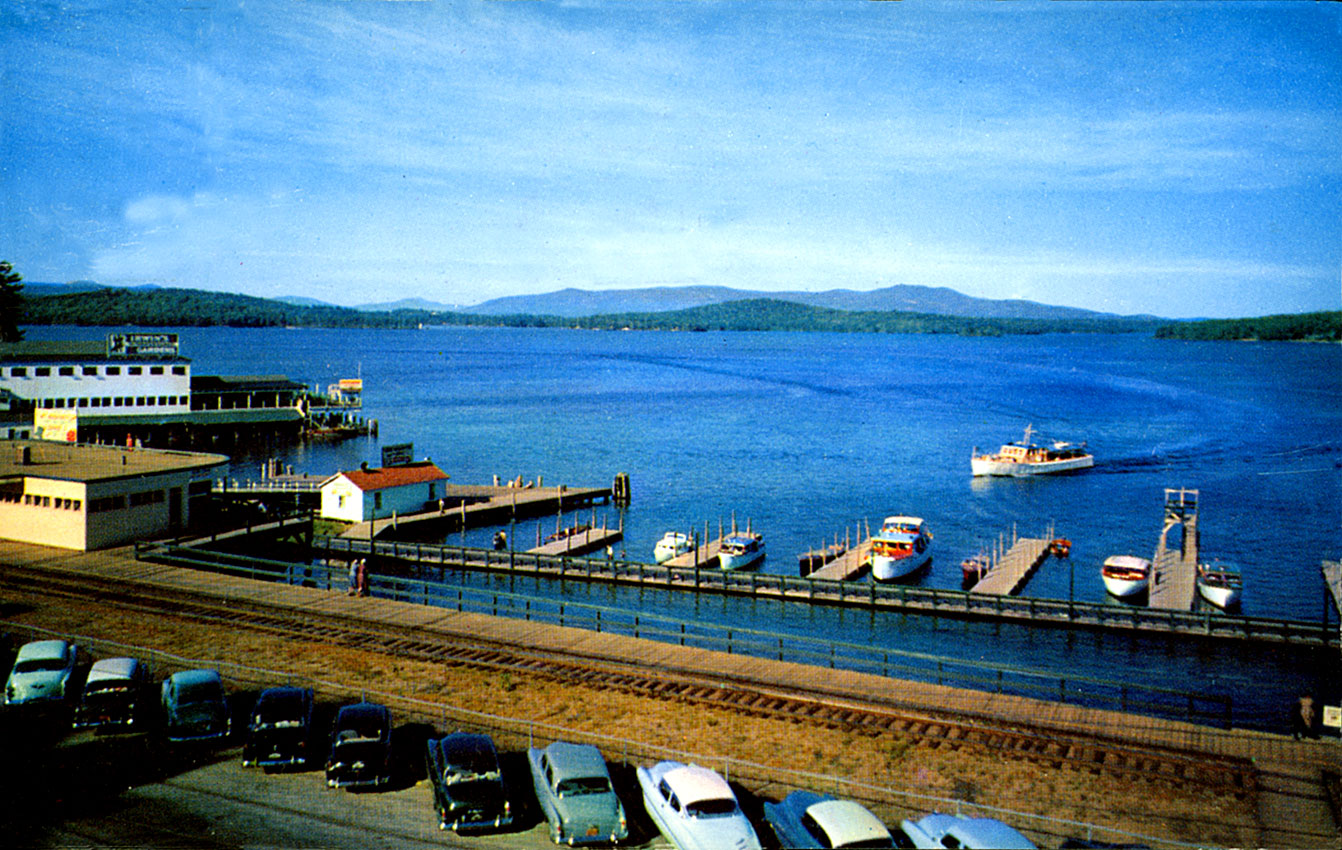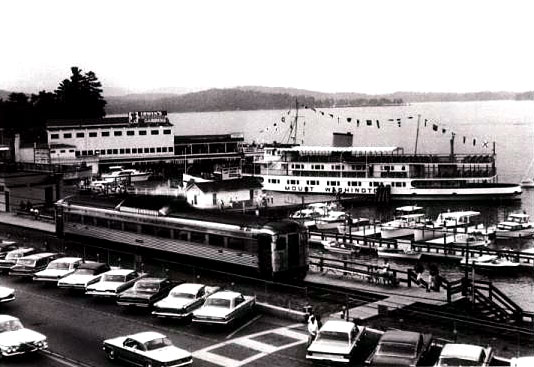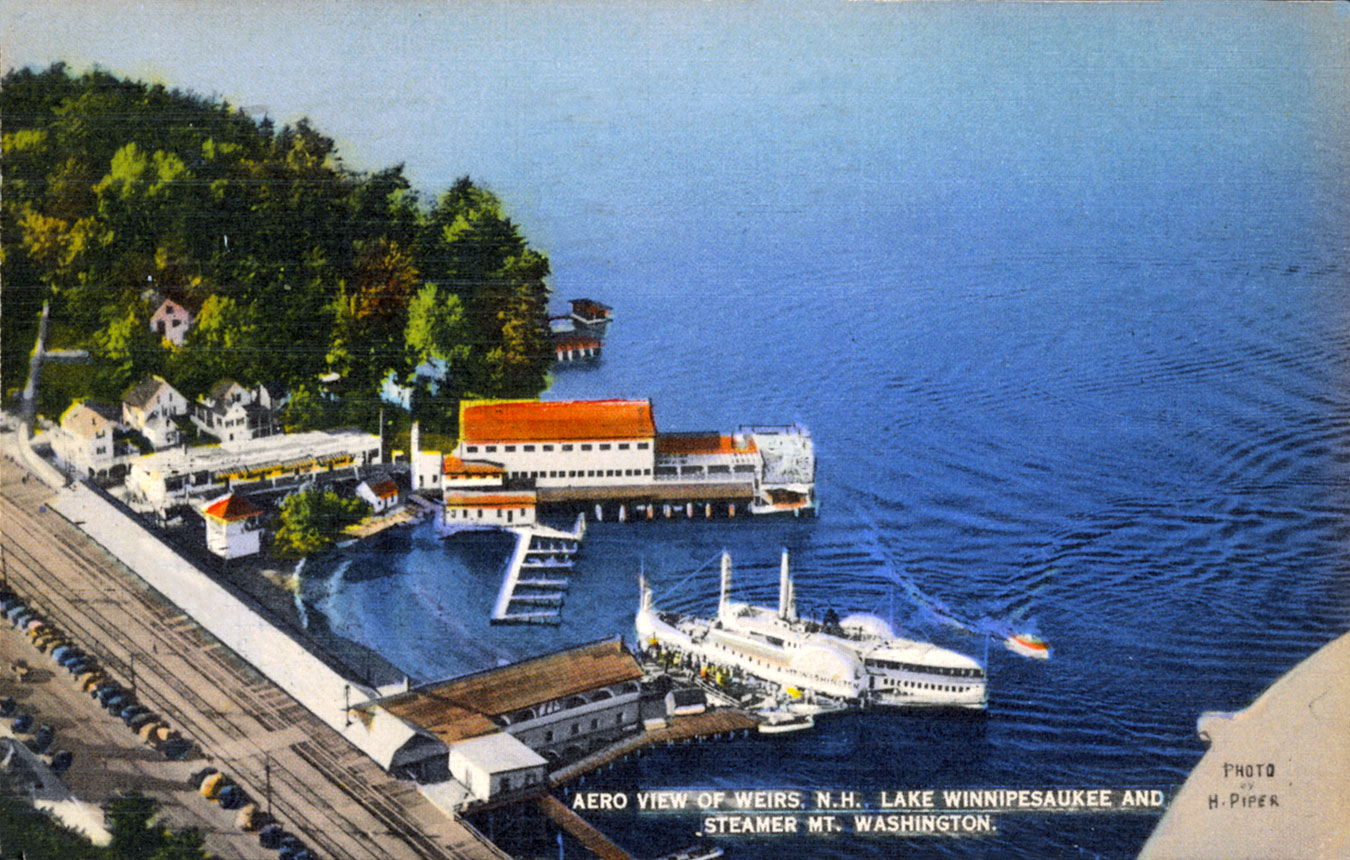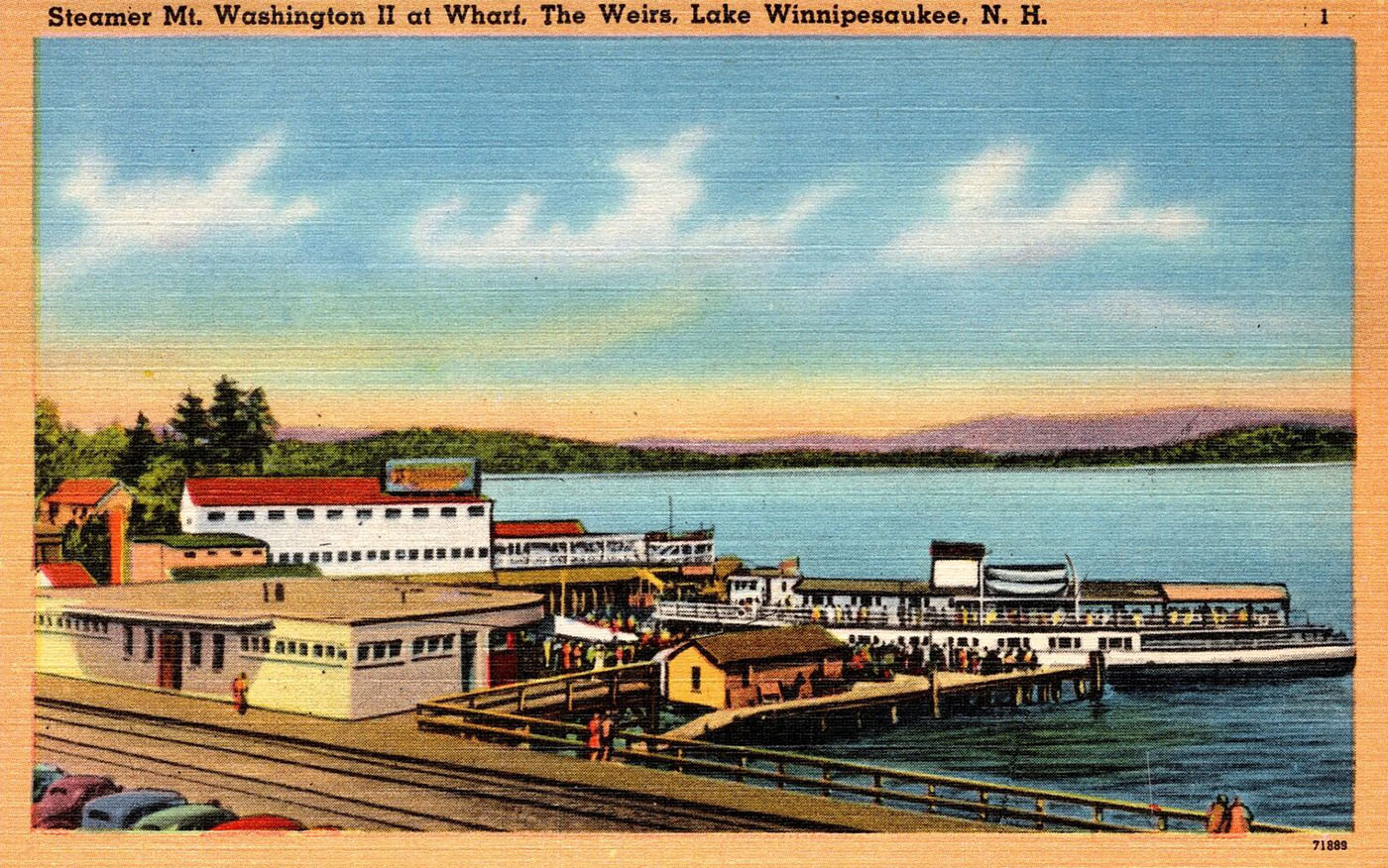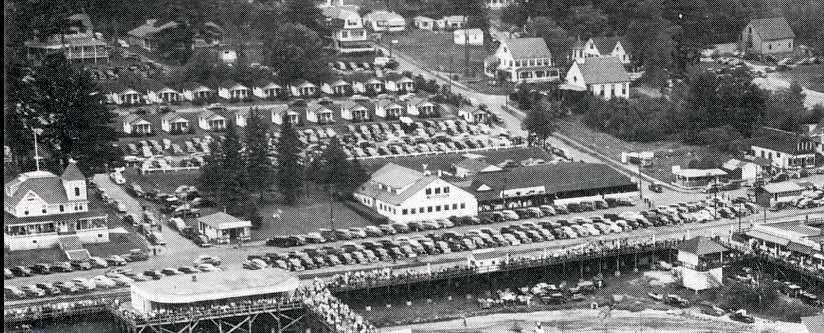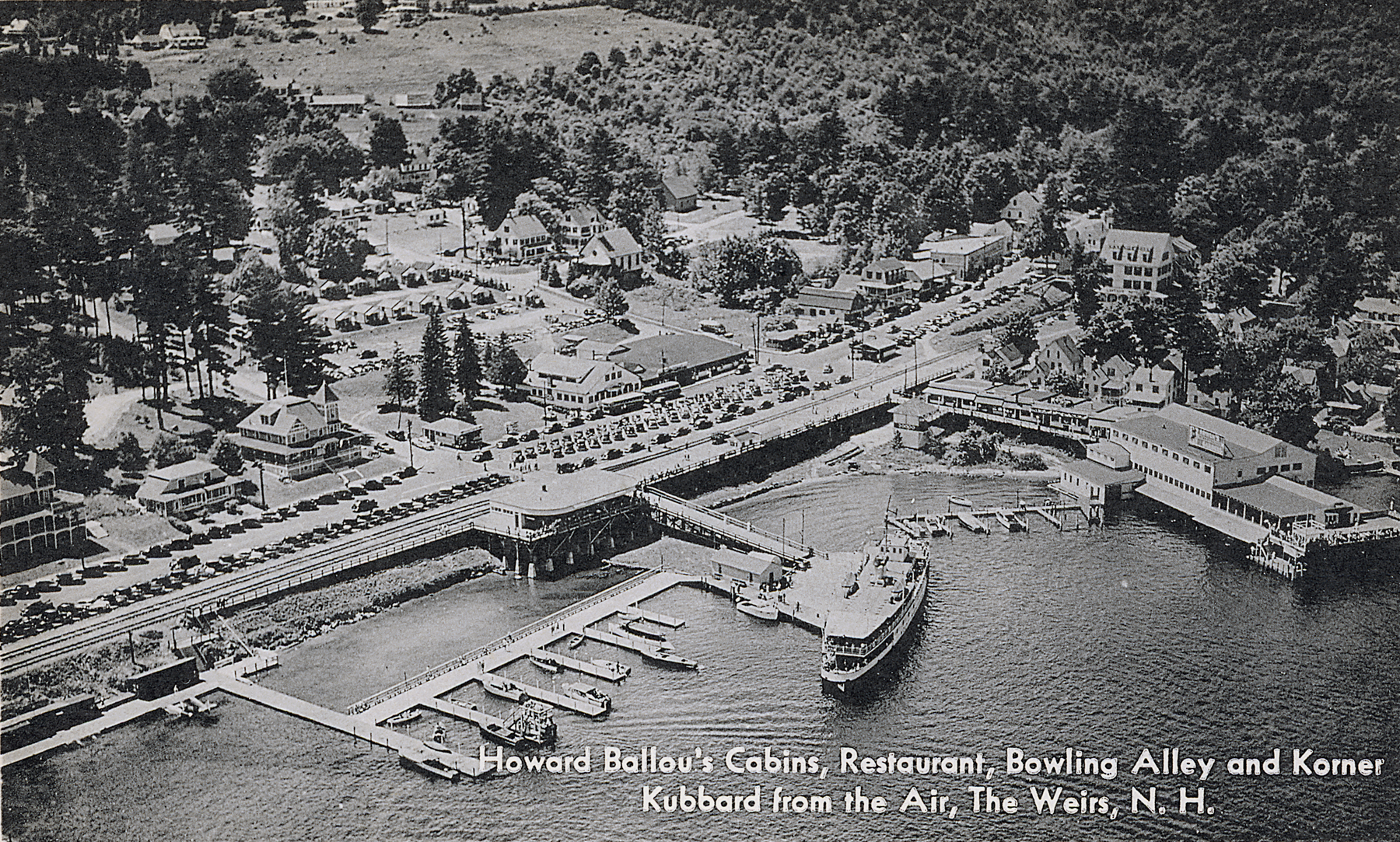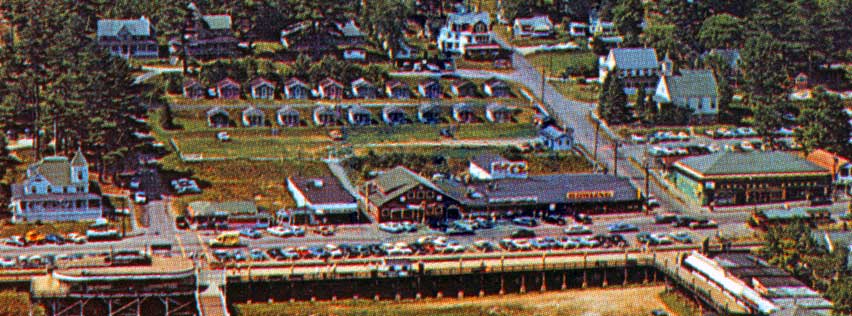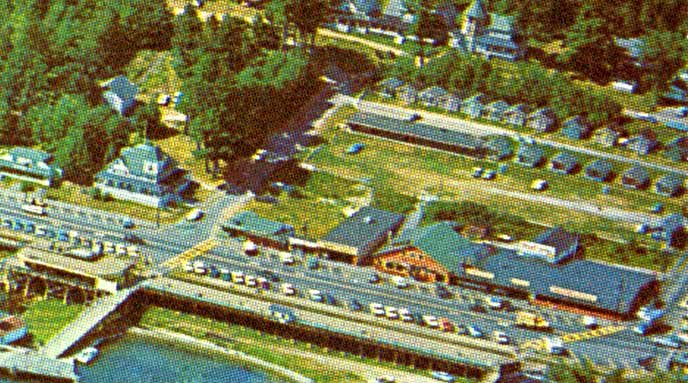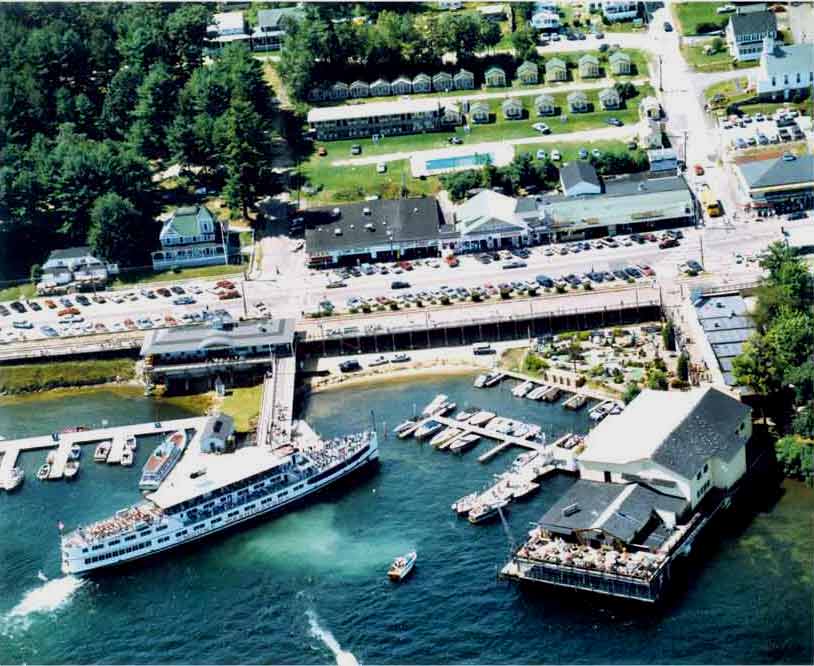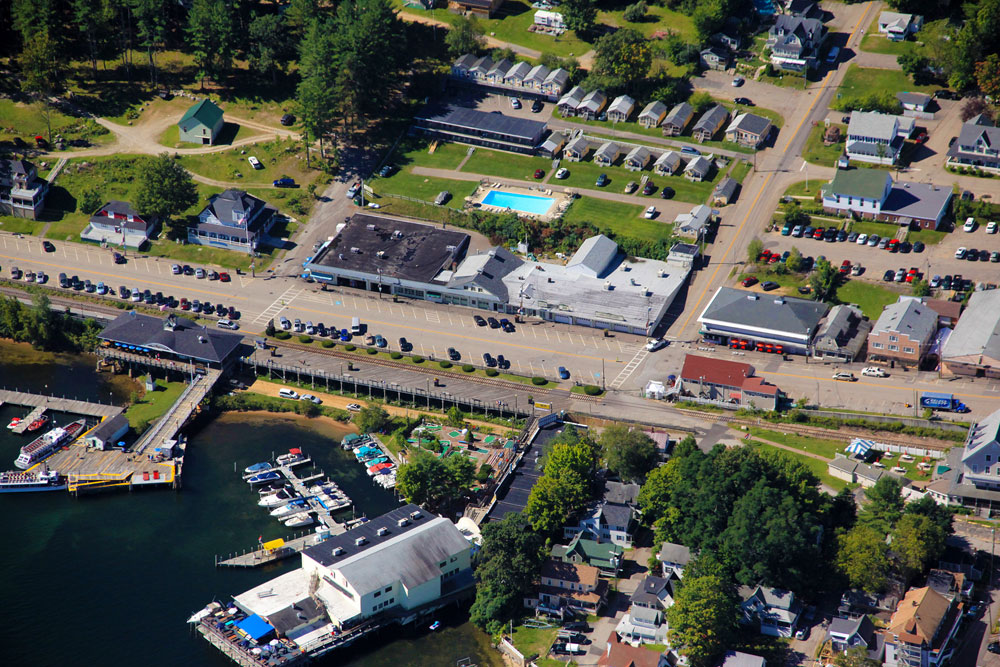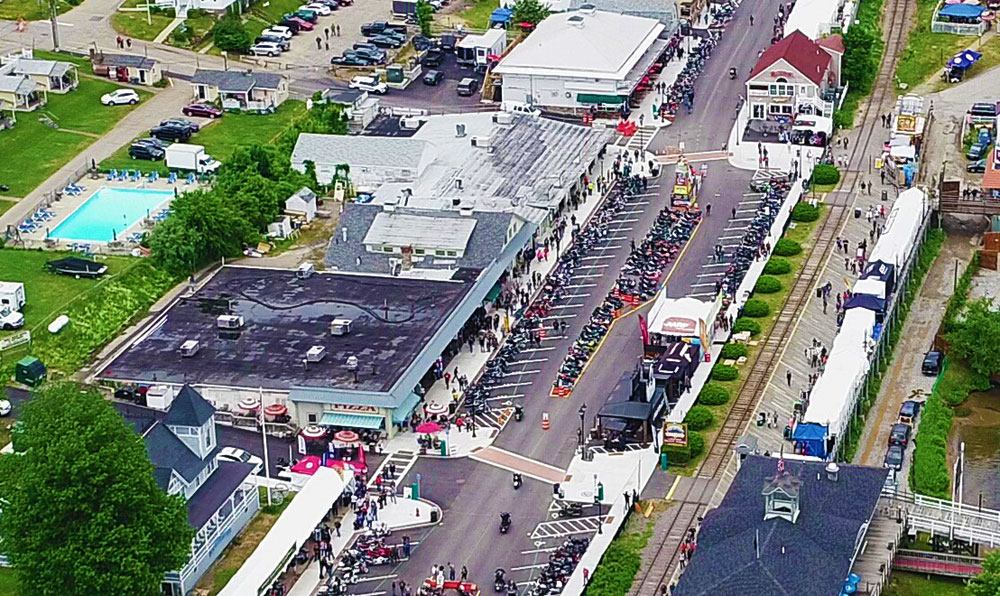Parking History
How has the parking situation changed in the center of Weirs Beach over the years?
In the 1910’s, cars, passenger trains, freight trains, electric street trolleys, and even motorcycles all vied for their share of the street. There were no organized parking rules.
As many as SIX sets of tracks severely constricted parking. There were four railroad tracks and two trolley tracks. First there was (#1) the main railroad line from Boston to Lincoln – the only tracks still present today. Two sidings (#2 & #3) directly in the center of town allowed freight or passenger cars to idle while the main train passed by. As one entered Weirs Beach from the South, a freight spur (#4) (see below) descended underneath the railroad station to a freight house, from where freight was transfered directly to the lake steamers of the time.
The 1923 Sanborn Fire Insurance map, below, shows exactly how the 4 railroad tracks were configured.
Freight spur (track #4). The Weirs Cafe is seen under construction, extending from the Second Weirs Beach Train Station, with the Lady of the Lake steamer docked alongside.
The freight spur is seen with the completed Weirs Cafe, extending from the Third Weirs Beach Train Station.
Although the focus of the photographer’s attention in this photo is the driver and passenger of a small boat, it is more interesting for what can be seen in the background. One can see here an opening under the freight house loading platform that is wide enough for freight cars. Underneath the freight house on the right, a doorway can be seen, where freight could be delivered to the basement of the Weirs Cafe, and then on to the Mount Washington steamer.
In addition to the four sets of railroad tracks, from 1899-1924, the trolley tracks of the Laconia Street Railway (#5) (see below) extended along Lakeside Avenue as far as the Lakeside House. The Laconia Street Railway also had a siding (#6) in the center of town to allow idling electric trolley cars to be bypassed.
This photo dates around 1915. On the right we see the Cafe Vix and a barbershop (note the barbershop pole) on the corner of Lakeside Avenue and Tower Street. This photo is notable for its interesting mix of pedestrians, automobiles, the Mount Washington steamer, and the canopy over the boardwalk that was attached to the third railroad station. Also note the Laommi Bean statue, visible in the distance down the avenue.
A very similar postcard view to the previous, showing the Kinsman general store on the right. For more info about the store, click here and scroll down.
On June 22, 1952, the railroad officially decided to “retire” the last siding. Before the following spring, the railroad had removed siding #2, leaving only the original, #1 main line running through Weirs Beach. On April 9, 1953, the railroad sold the land where siding #2 had been, to the City of Laconia, so additional parking could be developed on Lakeside Avenue.
The following photos show cars parked along the fence that separated Lakeside Avenue from the railroad tracks after the last siding had been removed.
By the early 1940’s the railroad canopy was gone, having burned along with the attached Weirs Cafe, the old steamer Mount Washington, the public wharf, and the public docks on December 22, 1939. The old electric trolley tracks had long been removed. Yet, with two sidings and the main passenger tracks still in the way, cars continued to park as they had before — perpendicular to the tracks on the East (Lake) side of Lakeside Avenue, and parallel to the curb on the West (Land) side.
By the late 1940’s the sidings had finally been removed in the center of town. With only the single, passenger set of railroad tracks remaining, cars began parking in a denser pattern. On the East (Lake) side of Lakeside Avenue, double parking was allowed, with one set of cars parking perpendicular to the curb, and another parking right behind at an angle. (Presumably there was an attendant nearby to juggle cars as neccessary.) On the West (Land) side of Lakeside Avenue, cars parked at an angle to the street. With heavy demand for parking, and commercial and public parking lots in the area yet to be developed, the front lawn of the Half Moon Cabins was often drafted into use as a commercial parking lot. (Howard Ballou, the owner at the time, advertised in a 1950 Lakes Region Association brochure not only “19 Modern Cabins” but also “Parking for 175 cars”.) The photo below was taken September 14, 1947.
The following year, in 1948, one of the strangest looking parking arrangements yet began in late June. On both sides of Lakeside Avenue, one row of cars parked parallel to the curb, while another row of cars parked at an angle to the center of the street. The Laconia Evening Citizen newspaper reported that “…the new parking regulations…will provide spaces for approximately 80 more cars than can be parked at present.” The front lawn of the Half Moon Cabins continued to double as a commercial parking lot. The photo below was taken circa 1950.
Additionally, at the behest of businessman Sidney Ames, owner of the Half Moon, the City of Laconia added parking meters in 1956 in an effort to keep parking spaces turning over and customers flowing into the area. The Laconia City Council’s unanimous vote to add meters, on May 24, 1956, was supported by numerous area businessman, including notably, James R. Irwin, but was opposed by about 40 Weirs residents, who felt the meters were “unnecessary and unlikely to solve the traffic problem.”
(Parking meters had first arrived in downtown Laconia and Lakeport during the summer of 1947, following the signing of a contract on April 14th with the Duncan Meter Corporation of Chicago, maker of the Miller meter. In 1947, the cost to park downtown was 5¢ an hour. The downtown meters lasted 25 years. They were gone by the end of 1972, about a year after the Laconia Retail Merchants Association had first requested their removal. In 2022, parking is still free in downtown Laconia, although after 50 years, there are now plans to reintroduce paid parking.)










